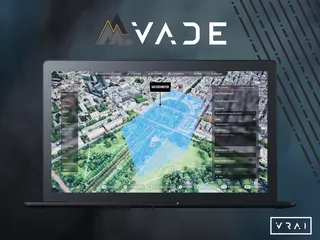ATC Training in a Single European Sky
Contact Our Team
For more information about how Halldale can add value to your marketing and promotional campaigns or to discuss event exhibitor and sponsorship opportunities, contact our team to find out more
The Americas -
holly.foster@halldale.com
Rest of World -
jeremy@halldale.com

Among the several domains of the aviation industry which are under the rulemaking remittal of the European Aviation Safety Agency (EASA) the training and licensing of air traffic controllers (ATCO) plays a significant role in the interchangeability of ATCO licenses and the free movement of air traffic management professionals within the member states of EASA. Mario Pierobon reports.
These two aspects are key enablers of the Single European Sky (SES), which is the set of packages launched by the European Commission to create a unified legislative framework for European aviation in its current and future context of expansion. In addition to favouring license interchangeability the ATCO training and licensing requirements are contributing to increase the commercial opportunities in the provision of ATM related training.
Common Requirements
ATCO training in EASA member states is delivered and managed in accordance with the common requirements which are defined by EASA, turned in the regulations by the European Parliament, overseen for implementation by the European national aviation authorities and implemented by training providers having their principal place of business in the EASA member states.
While the ATCO training requirements have become mandatory only during the last couple of years, the EU legislation has addressed the licencing of air traffic controllers since 2006.
“Directive 2006/23/EC, which was mainly based upon ICAO Annex 1 provisions, became the first step to harmonise the subject. This Directive required the implementation of Annex 1 into the national law. Subsequently, with the introduction of Regulation 216/2008 - the so-called ‘EASA Basic Regulation’, ATCO licencing was put under the scope of the EASA regulatory, certification, oversight and standardisation activities,” said Fabio Grasso, regulations officer at EASA. “It was then that regulation 805/2011 was introduced and became directly applicable in all the EU Member States replacing the national acts. Eventually, this regulation was replaced by regulation 2015/340, which has been developed to fully implement the principles and the objectives established in the EASA Basic Regulation concerning ATCO licencing. This became fully applicable as of 1 January 2017.”
Before the introduction of the applicable EASA legislation ATCO licencing national requirements were based on ICAO Annex 1 provisions, the ICAO system developed local models which in some cases were quite different.
“This former situation did not allow for a mutual recognition of ATCO licences and of training organisations’ certificates throughout Europeans States,” commented Grasso. “The EU legislation aimed, and still aims, at ensuring such mutual recognition and, by this, the mobility of persons and services. In addition, in the context of a common level playing field, they promote the required level of safety set by the EASA Basic Regulation.”
“Previously with the 805/2011 regulations, there were particular national requirements which differed, we were only required to teach the national requirements. Under the 2015/340 regulations, while there are still national requirements which need to be taught, we are also required to teach the common content. It is this criteria which enables the process of licence exchange between member states,” said Lee McGregor, Acting Head of Assurance and Development at NATS, the UK air navigation service provider (ANSP) which began introducing courses compliant with the 2015/340 regulations back in 2015.
According to EASA the incremental regulatory initiatives that have been implemented over the years have progressively ensured an overall consistent implementation of the ATCO requirements across the EASA Member States.
“The evolution of the regulatory framework in Europe has already ensured harmonisation on common principles for ATCO licencing, including requirements for training. The introduction of regulation 2015/340 provides more detailed mandatory and flexible requirements, thus enabling the achievement of the desired objectives, i.e. harmonisation and proportionality,” said Grasso.
“While the training standards should now be implemented well, local differences may still occur due to the national authorities’ different interpretations of the regulations,” said Vladi Barrosa, a spokesperson for skyguide, the ANSP of Switzerland. “Regulation 2015/340 provides for a harmonisation regarding licensing, requirements for instructors and assessors, promotion, training contents and the interchangeability between EASA member states.”
Evolution of ATM
The new EASA requirements are set to match the continuing evolution of ATM and in this respect human factors training plays a key role.
“Human factors and technology are the main pillars on which air traffic control is built. They go hand in hand. Human factors are at the centre of every technological innovation that is gradually implemented in ATC after all the necessary validation steps and the training delivered to the operational staff,” said a spokesperson for ENAV, the ANSP of Italy.
“The constant evolution of ATM/air navigation services (ANS) systems, including ATC systems, requires to be recognised in the regulatory framework. The ATCO licencing requirements, in particular those related to training, enable air traffic controllers to be qualified for operating in an automated environment,” said Grasso. “The details are dependent on local ATS provision which have to be included in the local training plans and which also have to address specific human factors related to the operational environment. In simple words, the general requirements are set, but their implementation depends on the ATC systems available to the controllers.”
“There are specific detailed training objectives relating to human factors in each of the ATC courses. Knowledge of future technologies is also covered. The level of automation, and its implementation, varies between individual sectors, units, and ANSPs. As a result, the requirements ensure that the student licence holder is equipped with the essential skills to meet the demands of airspace management for today and tomorrow,” said McGregor.
The regulation foresees a basic requirement to provide human factors training which concern the frequency and duration of training as well as the contents (such as fatigue management or stress management); provisions are also made for initial and recurrent training, noted Barrosa. However, the current regulation focusses on the existing operating models (e.g. unit endorsement, ratings etc.) and there is basically no room yet for innovative ideas like location-independent qualifications. “Automation is not a target topic of the new regulation. There will be amendments required to accommodate innovative operating models.”
Fitting the Single European Sky
Although legally speaking the EU ATCO licencing regulatory framework does not derive from the SES framework, it is considered to be a key enabler, as it allows the harmonisation and setup of a European standard for licensing and training which is in line with SES targets. “In particular, the international exchange of licenses and/or license information as well as the European standardisation of training and competencies take a further step to a Single European Sky. So, an ATCO trained in, for example Germany, can be deployed in Spain for example, after site specific training as the basic requirements and standards are common. This was not necessarily the case before,” said Barrosa.
The ATCO licensing requirements are also in line with the general objectives of the EASA system, such as to establish and maintain a high uniform level of civil aviation safety in Europe, to facilitate the free movement of persons and services, and to provide a level playing field for all actors in the internal aviation market.
“In this context, the ATCO licensing rules aim to facilitate the mobility of air traffic controllers as well as the integration within the Functional Airspace Blocks via the establishment of common training standards, and the recognition of licences at EU level, as well as via the establishment of a clear framework for the air traffic controller training organisations and the recognition of their certificates. Moreover, this rule establishes the necessary synergies for aero-medical examiners and centres involved in the medical certification of pilots and air traffic controllers,” said Grasso.
“The consistency provided by having a level of common content in ATC training directly supports the future integration of European airspace,” commented McGregor.
“As air traffic controllers hold a European license this allows them to work for other ANSPs in Europe. Collaborations among different ANSPs are quite frequent. For example, in 2009 some ATCOs from ENAV went to DFS, the ASNP of Germany, to support DFS in the technological upgrade of their area control centres (ACC) and to strengthen the workforce during the transition from the old to the new air traffic control system,” observed the ENAV.
Business Opportunities
The liberalisation of ATM is opening up business opportunities for training organisations. “For instance, it is possible for a training organisation located outside of the EU to apply for a certificate to provide training for European air traffic controllers. A number of independent training organisation across Europe and beyond have emerged, i.e. that are not specifically linked to one service provider. This enables individuals to train and obtain a student air traffic controller licence before being recruited by an ANSP, which is a prime example of the facilitation of the free movement of persons,” said Grasso.
“Currently there is a high demand for ATC training worldwide, and European initial training organisations have always engaged in commercial opportunities both within Europe and around the world,” noted McGregor.
ENAV, for example, provides training services at its dedicated training academy located in Forlì. “ATCOs of foreign countries (both European and extra-European) come periodically to our facilities in order to undergo training.”
Barrosa points out that the European ATCO training market is not opening significantly at the moment. “Most ANSPs still operate their own academies to facilitate the high-end training in their air spaces, with their procedures and on their technical equipment. The implementation of RP II and III of the European Commission – and the respective significant pressure on cost – might change the picture,” he said. “Nevertheless, we see more and more college type schools (i.e. non ANSP) offering ATM training. Globally, the emerging markets in Middle and Far East show high potential. But as the volumes are extremely high, a local deployment of training is required. Dispatching scarce resources into those markets to give support is difficult in the middle of the high demand cycle in Europe.”
Published in CAT issue 3/2018


